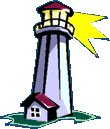|
Telnet
A system that allows a computer to control at least a portion of a remote
computer. It is commonly used to provide off-site access to such services as automated library catalogs.
UNIX
A computer operating system with powerful networking features. Much
of the internet has been built on a foundation of UNIX technology.
URL
Uniform Resource Locator which
describes the "address" for a document on the internet
along with the protocol by which the site or resource is accessed. The most
common protocol on the web is the HTTP protocol. It is important to enter the address correctly, for an extra
space, a capital letter, a missing or additional period or slash will cause
the address to most likely not work.
Usenet
The portion of the internet where thousands of newsgroups are found. Topics
range from hobbies to religion and virtually everything else.
Watermark
A "watermark" is a graphic that appears at the back of the
page but doesn't scroll along with the rest of the page.
Web Area Information Servers (WAIS)
A system for searching through the contents of indexed
documents on the internet.
WYSIWYG
(pronounced "whizzy-wig") usually refers to website
building software that enables you to see images onscreen exactly
as they will appear on your browser.
World Wide Web (WWW)
A collection of interconnected internet sites that can
be traversed through hypertext links. In a graphical user interface environment, these links are screen areas
that lead to other web sites when a mouse is positioned on a link, and clicked. Web sites can include text, graphics,
input fields, audio, video, and access to a wide range of internet features.
|


 Back to the "Christ-Centered Mall"
Back to the "Christ-Centered Mall"